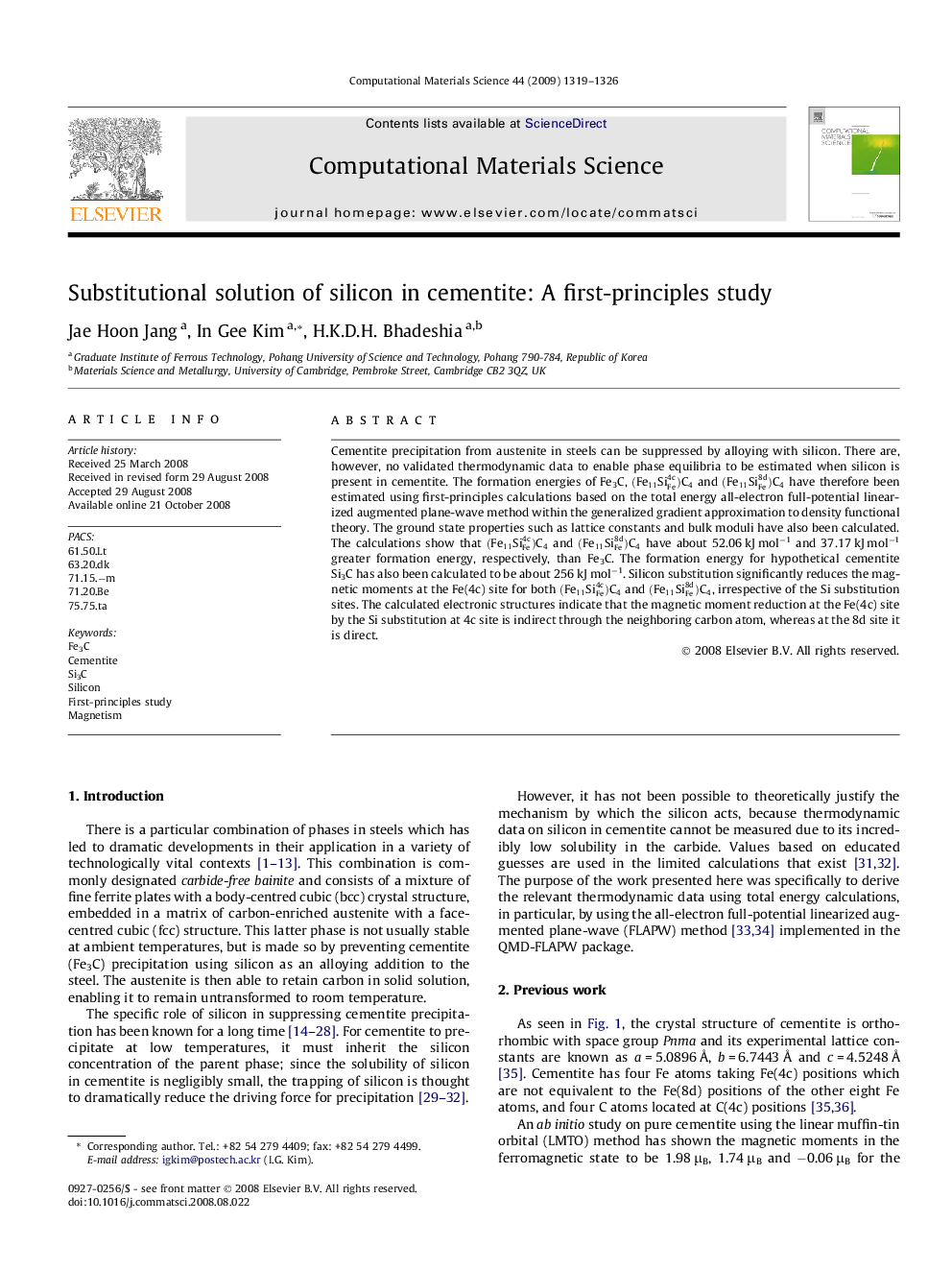| Article ID | Journal | Published Year | Pages | File Type |
|---|---|---|---|---|
| 1563913 | Computational Materials Science | 2009 | 8 Pages |
Cementite precipitation from austenite in steels can be suppressed by alloying with silicon. There are, however, no validated thermodynamic data to enable phase equilibria to be estimated when silicon is present in cementite. The formation energies of Fe3C, (Fe11SiFe4c)C4 and (Fe11SiFe8d)C4 have therefore been estimated using first-principles calculations based on the total energy all-electron full-potential linearized augmented plane-wave method within the generalized gradient approximation to density functional theory. The ground state properties such as lattice constants and bulk moduli have also been calculated. The calculations show that (Fe11SiFe4c)C4 and (Fe11SiFe8d)C4 have about 52.06 kJ mol−1 and 37.17 kJ mol−1 greater formation energy, respectively, than Fe3C. The formation energy for hypothetical cementite Si3C has also been calculated to be about 256 kJ mol−1. Silicon substitution significantly reduces the magnetic moments at the Fe(4c) site for both (Fe11SiFe4c)C4 and (Fe11SiFe8d)C4, irrespective of the Si substitution sites. The calculated electronic structures indicate that the magnetic moment reduction at the Fe(4c) site by the Si substitution at 4c site is indirect through the neighboring carbon atom, whereas at the 8d site it is direct.
